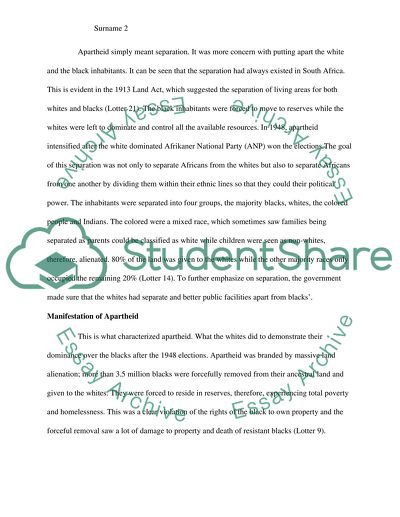Cite this document
(“Common History of oppression of people of African descent and Research Paper”, n.d.)
Common History of oppression of people of African descent and Research Paper. Retrieved from https://studentshare.org/history/1638892-common-history-of-oppression-of-people-of-african-descent-and-indigenous-peoples-in-the-united-states-and-south-africa
Common History of oppression of people of African descent and Research Paper. Retrieved from https://studentshare.org/history/1638892-common-history-of-oppression-of-people-of-african-descent-and-indigenous-peoples-in-the-united-states-and-south-africa
(Common History of Oppression of People of African Descent and Research Paper)
Common History of Oppression of People of African Descent and Research Paper. https://studentshare.org/history/1638892-common-history-of-oppression-of-people-of-african-descent-and-indigenous-peoples-in-the-united-states-and-south-africa.
Common History of Oppression of People of African Descent and Research Paper. https://studentshare.org/history/1638892-common-history-of-oppression-of-people-of-african-descent-and-indigenous-peoples-in-the-united-states-and-south-africa.
“Common History of Oppression of People of African Descent and Research Paper”, n.d. https://studentshare.org/history/1638892-common-history-of-oppression-of-people-of-african-descent-and-indigenous-peoples-in-the-united-states-and-south-africa.


